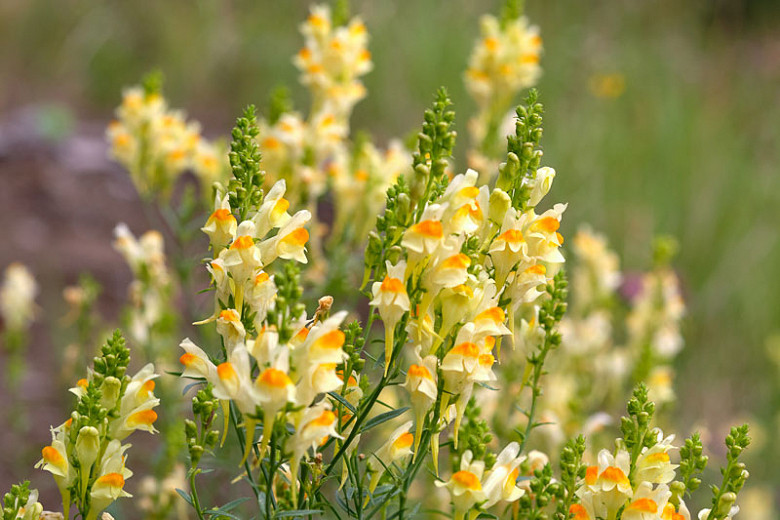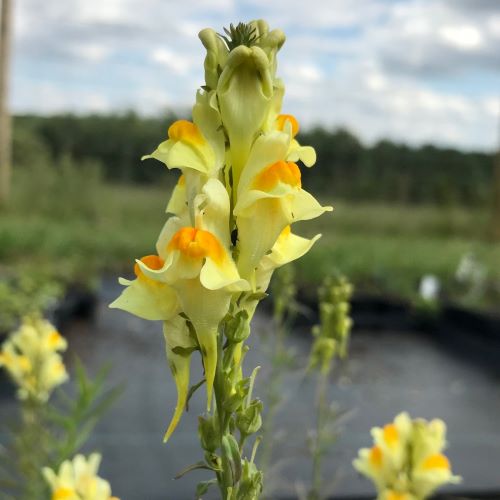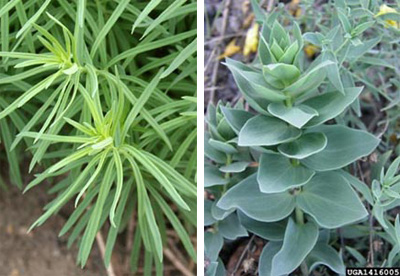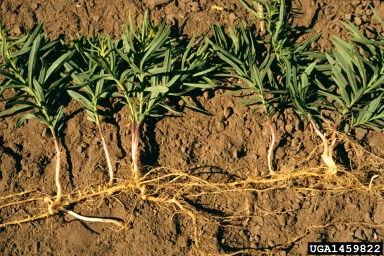How To Get Rid Of Yellow Toadflax
Yellow toadflax is a perennial weed that can be found in a variety of habitats, including fields, meadows, and roadsides. It is a member of the plantain family and is known for its bright yellow flowers. Yellow toadflax is a problem weed because it can quickly spread and crowd out other plants. It can also produce a large number of seeds, which can remain viable in the soil for many years.
If you have yellow toadflax in your yard or garden, there are a few things you can do to get rid of it.
Mechanical control
One of the best ways to control yellow toadflax is to remove it by hand. This is most effective when the plants are young and have not yet gone to seed. To remove yellow toadflax by hand, dig up the entire plant, including the roots. Be sure to dispose of the plant properly, either by burning it or by placing it in a sealed bag in the trash.
Mowing
Mowing can also be an effective way to control yellow toadflax. However, it is important to mow the plants repeatedly, as mowing will not kill them outright. Mowing will help to weaken the plants and make them more susceptible to other control methods.
Herbicides
In some cases, you may need to use herbicides to control yellow toadflax. There are a number of herbicides that are effective against yellow toadflax, but it is important to choose one that is labeled for use on this weed. Be sure to follow the instructions on the herbicide label carefully.
Biological control
In some cases, biological control can be used to control yellow toadflax. Biological control involves using insects or other organisms that prey on yellow toadflax. There are a number of insects that are known to feed on yellow toadflax, including the toadflax flea beetle and the toadflax weevil.
Prevention
The best way to control yellow toadflax is to prevent it from getting established in your yard or garden in the first place. Here are a few tips for preventing yellow toadflax:
- Keep your yard or garden free of weeds.
- Mow your lawn regularly.
- Do not allow yellow toadflax to go to seed.
- If you see yellow toadflax, remove it immediately.
By following these tips, you can help to keep yellow toadflax out of your yard or garden.
Yellow toadflax (Linaria vulgaris) is a common weed in North America. It is native to Eurasia and was introduced to North America in the 1600s. Yellow toadflax is a perennial plant that can grow up to 2 feet tall. It has yellow flowers with an orange throat. The flowers bloom in late spring and summer. Yellow toadflax is a prolific seed producer and can quickly spread to new areas. It can be a nuisance in gardens and lawns.
If you have yellow toadflax in your yard, you can control it by pulling the plants by hand or by using a herbicide. You can also prevent yellow toadflax from spreading by mowing your lawn regularly and by removing any weeds that you see.
For more information about yellow toadflax, please visit Home Gardening.
FAQ of yellow toadflax
- What is yellow toadflax?
Yellow toadflax (Linaria vulgaris) is a perennial weed that is native to Europe. It has been introduced to North America and other parts of the world, where it is now considered an invasive species. Yellow toadflax is a low-growing plant with yellow flowers that bloom in the spring and summer. It can grow up to 3 feet tall and spreads by rhizomes.
- What are the problems associated with yellow toadflax?
Yellow toadflax is a problematic weed because it can displace native plants and reduce biodiversity. It can also be toxic to livestock and pets. Yellow toadflax can also harbor pests and diseases, which can spread to other plants.
- How can I control yellow toadflax?
There are a number of ways to control yellow toadflax, including:
* Hand pulling: This is the most effective way to control yellow toadflax, but it can be time-consuming and labor-intensive. It is important to remove the entire plant, including the roots.
* Mowing: Mowing can help to control yellow toadflax, but it is not a permanent solution. The plant will resprout from the roots.
* Cultivation: Cultivation can help to control yellow toadflax, but it is important to cultivate the soil deeply enough to remove the roots.
* Chemical control: There are a number of herbicides that can be used to control yellow toadflax. However, it is important to use herbicides carefully and according to the label instructions.
- What are some tips for preventing yellow toadflax?
The best way to prevent yellow toadflax is to avoid introducing it to your property in the first place. If you are planting new plants, be sure to purchase them from a reputable nursery that has certified their plants as being weed-free. You can also help to prevent the spread of yellow toadflax by cleaning your tools and equipment thoroughly after using them in an infested area.
Image of yellow toadflax
10 different images of yellow toadflax that are free to use:
- Yellow toadflax in full bloom. The flowers are a bright yellow color and have a long, narrow shape. The plant has a few pairs of leaves that are arranged opposite each other.

- Yellow toadflax in a meadow. The plant is growing in a field of grass and wildflowers. The flowers are a bright yellow color and are standing out against the green background.

- Close-up of a yellow toadflax flower. The flower is a bright yellow color and has a long, narrow shape. The petals are slightly curled and there are a few dark spots at the base of each petal.
- A bunch of yellow toadflax flowers. The flowers are tied together in a bunch and are arranged in a spiral shape. The flowers are a bright yellow color and have a long, narrow shape.

- Yellow toadflax in a garden. The plant is growing in a garden bed and is surrounded by other flowers. The flowers are a bright yellow color and are standing out against the green background.

- Yellow toadflax in a vase. The flowers are arranged in a vase and are standing in water. The flowers are a bright yellow color and have a long, narrow shape.

- Yellow toadflax seed pods. The seed pods are a brown color and are about 1 inch long. The pods are arranged in a spiral shape and are attached to the stem of the plant.
- Yellow toadflax leaves. The leaves are a light green color and are about 2 inches long. The leaves are arranged opposite each other on the stem of the plant.

- Yellow toadflax roots. The roots are a brown color and are about 6 inches long. The roots are arranged in a tangled mass and are attached to the bottom of the plant.

- A bee pollinating a yellow toadflax flower. The bee is crawling on the flower and is collecting pollen from the anthers. The pollen is a bright yellow color and is sticking to the bee's fur.

Post a Comment for "How To Get Rid Of Yellow Toadflax"